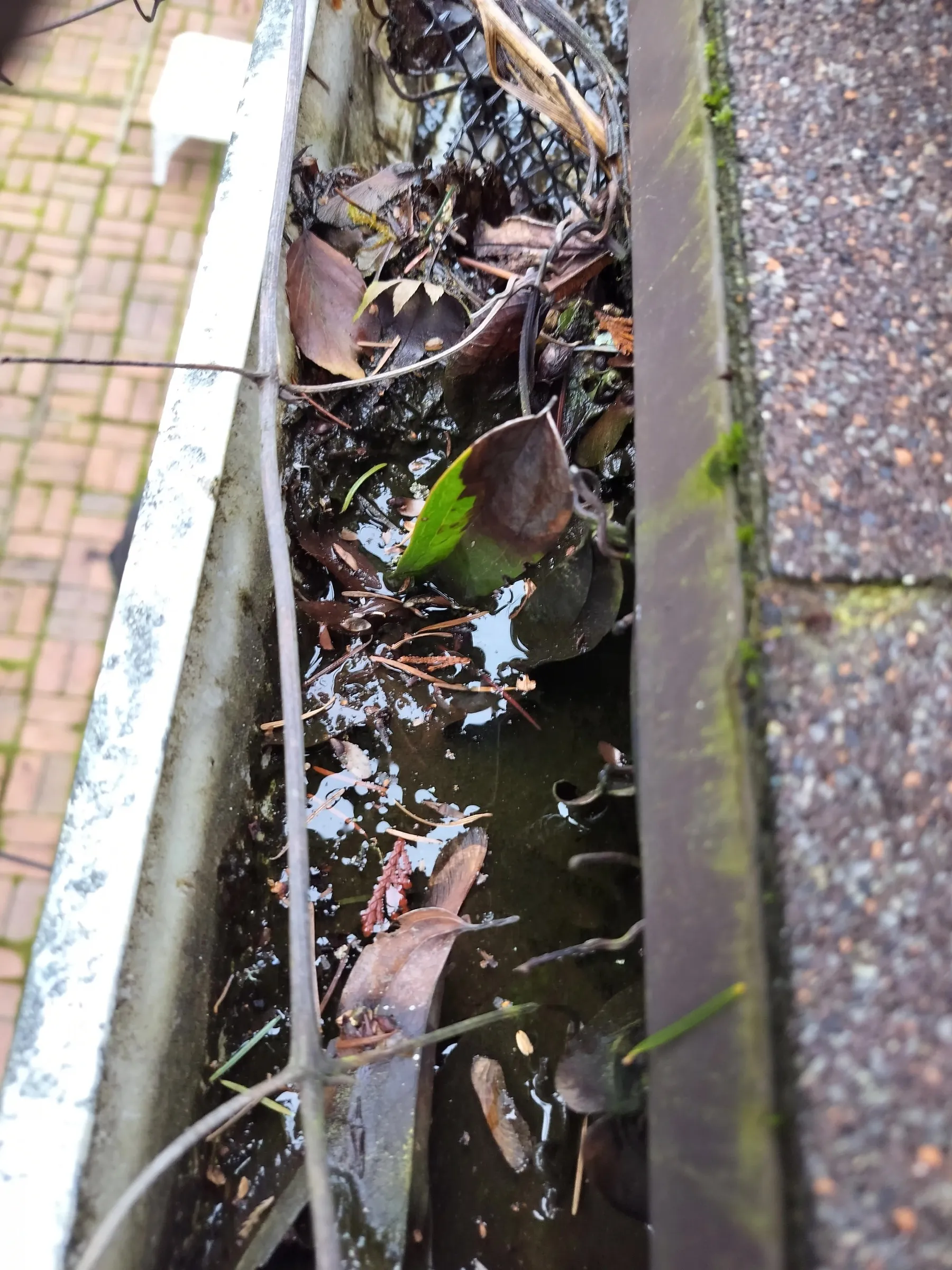Your gutters play a crucial role in directing rainwater away from your home, protecting your foundation and surrounding landscape from potential water damage. While gutters are designed to handle a significant amount of debris, problems arise when water flow is obstructed. Here are the top three causes of gutter overflow:
Full Gutters

In Washington State, our majestic trees add to the natural beauty of our surroundings, but they also shed leaves, twigs, and other debris that easily accumulate in your gutters. Regular gutter cleaning is essential to prevent clogs that can block the flow of water and cause dangerous overflow, leading to water damage and costly repairs.
What to do about full gutters
- Have your gutters cleaned regularly.
- Most gutters should be cleaned at least once per year, if not twice per year.
Clogged Downspouts
Downspouts are an essential component to your gutter system, they are the pipe that runs mostly vertically from the gutter to the ground. Water that falls into your gutters from your roof needs to be brought to the ground (or underground) in a controlled manner, but if the downspouts are clogged the water may eventually pour over the top of the gutter and fall to the ground, with such an impact that over time there will be holes drilled into your landscape.
Common Causes of Downspout Clogs
If your downspouts clog frequently, several factors might be contributing:
- Debris Accumulation at the Elbow:

- The first point of clogging typically occurs at the initial elbow of the downspout. This area naturally traps leaves, twigs, and other debris. Fortunately, this type of clog is relatively easy for a professional gutter technician to disassemble and clear.
- Internal Obstructions Due to Installation Practices:

- A less obvious but significant cause of persistent clogs is improper installation. Sometimes, in an effort to make downspout pieces fit together, installers may inadvertently squeeze the sections, reducing the internal diameter. This narrowing restricts water flow and makes it easier for debris to accumulate and cause blockages.
- From the outside, the downspout may appear to be in good condition, but once disassembled, the restricted space becomes evident. This installation oversight can lead to frequent and difficult-to-remove clogs, undermining the effectiveness of your gutter system. If your downspouts clog frequently, this may be the cause.
- This is more common than you might think. If you believe you may have this issue, contact me about a Downspout Rebuild
Prevention Tips:
- Regular Maintenance: Schedule routine inspections and cleanings to prevent debris buildup.
- Professional Installation: Ensure your gutter system is installed correctly with adequate space in downspouts to facilitate smooth water flow.
Improperly Sloped Gutters

Proper slope is essential for effective gutter performance. Gutters must be angled slightly toward the downspouts to allow gravity to carry rainwater away from your home efficiently. If after cleaning your gutters have significant standing water, then this is something that should be addressed.
- Aligning Gutters with the Roofline: If the roofline of your house leans to one side, mounting the gutters parallel to the roofline can cause water to flow in the wrong direction. This misalignment is particularly common in areas where the roof is not fully supported by load-bearing walls, such as certain types of overhangs above the front walkway.
- Consequences of Poor Slope: Without the correct slope, water may pool in the gutters or flow back toward the house, increasing the risk of overflow, leaks, and water damage to your home's exterior.
Solutions to Improper Slope:
Lowering the Gutter Near the Downspout:
- Pros: Adjusting the height of the gutter near the downspout ensures that water flows directly into the downspout without pooling. This method is effective in restoring proper water flow.
- Cons: This adjustment may be visually noticeable and could affect the aesthetic appearance of your gutter system.
Adding an Additional Downspout:
- Pros: Installing another downspout on the side where water naturally flows can help manage increased water volume and prevent overflow.
- Cons: If your home has an underground drain system, additional work may be required to connect the new downspout properly, ensuring seamless water redirection.
Conclusion
Even when gutters are installed professionally, maintenance is required to keep them functioning properly. If you're in need of new gutters, gutter cleaning, or gutter repairs and modifications, don't hesitate to reach out!
